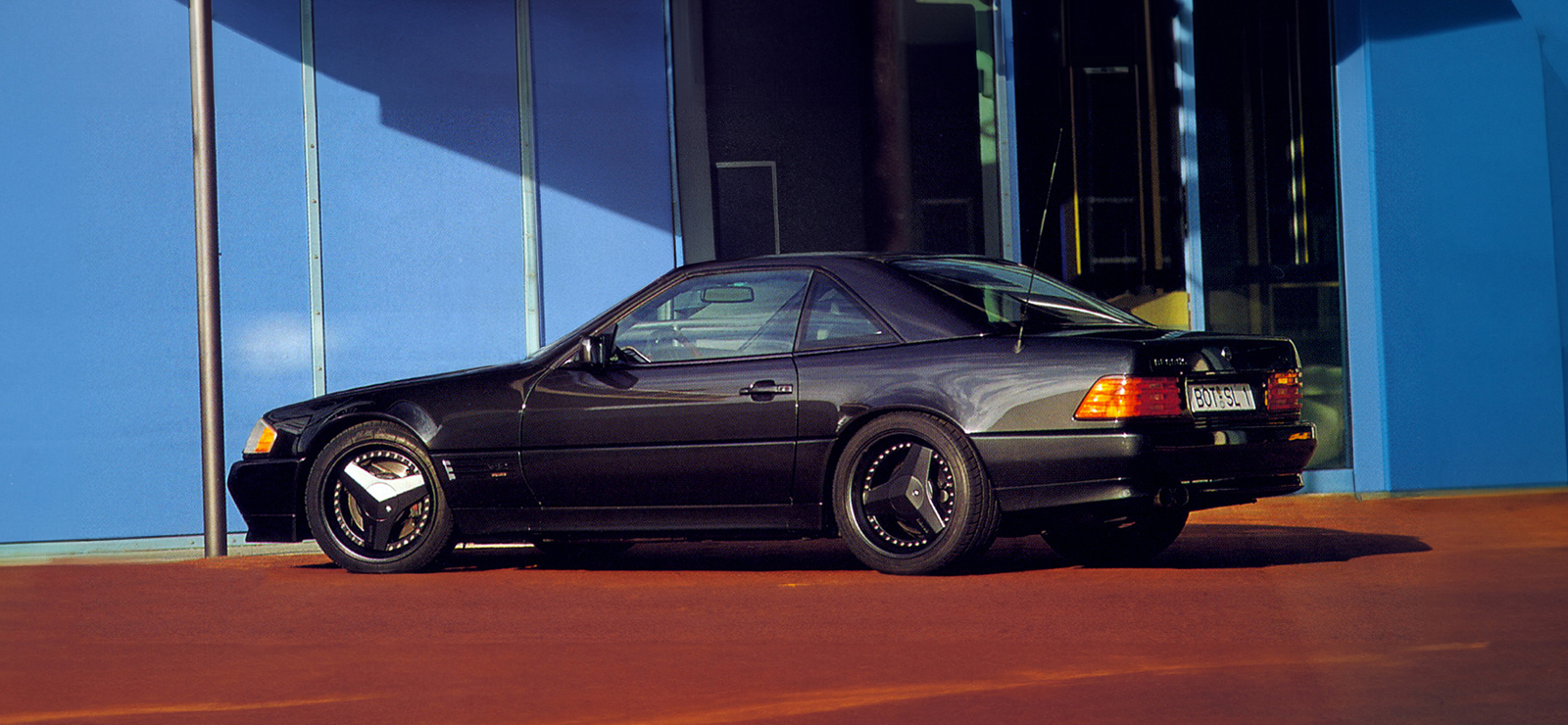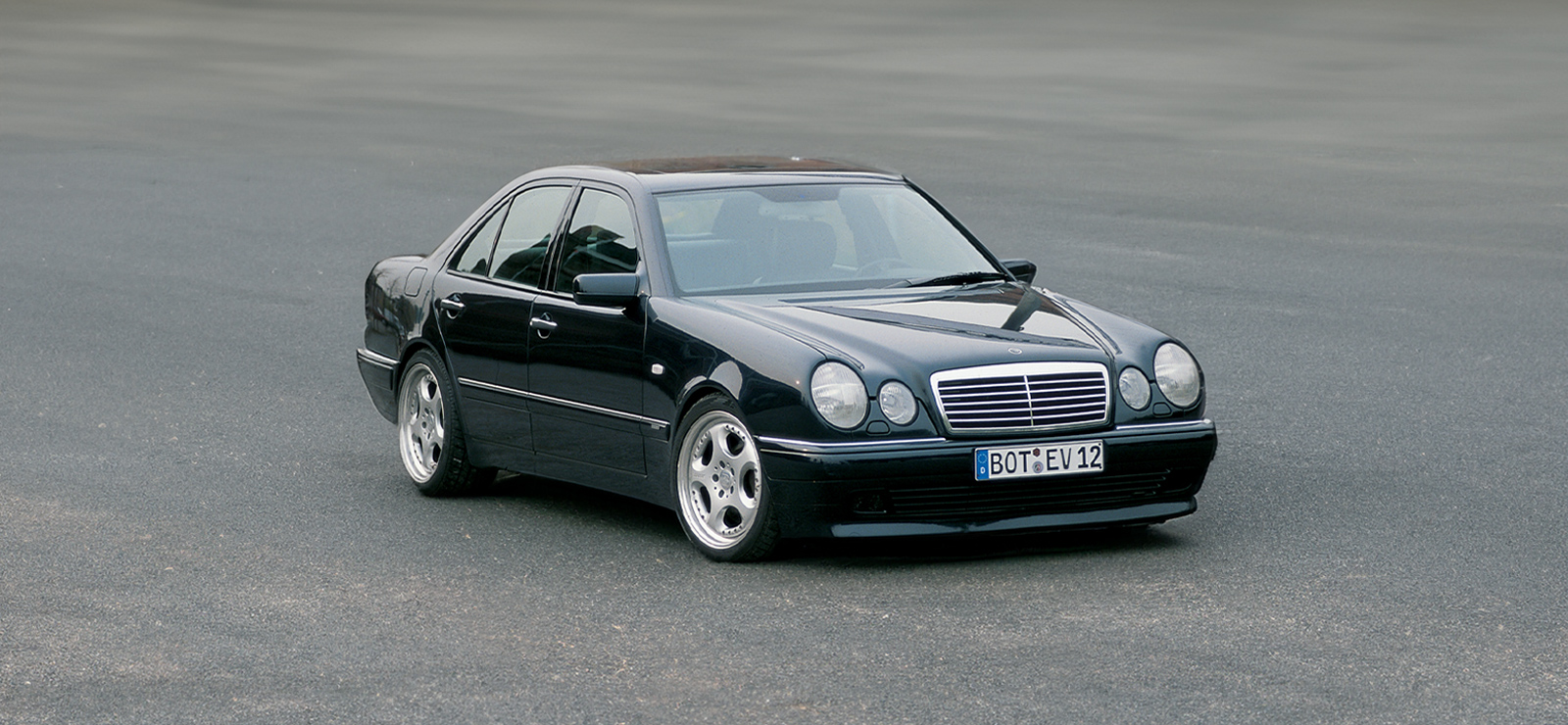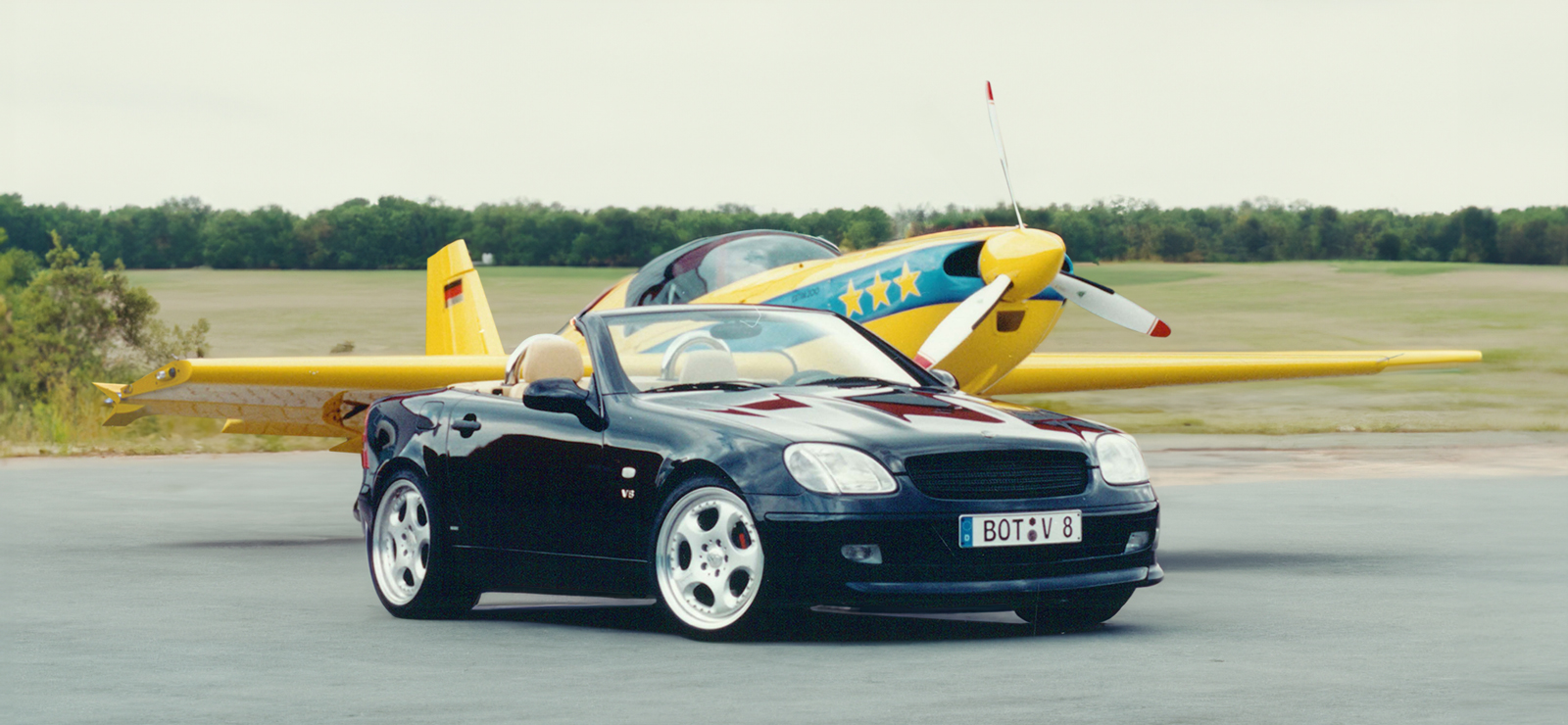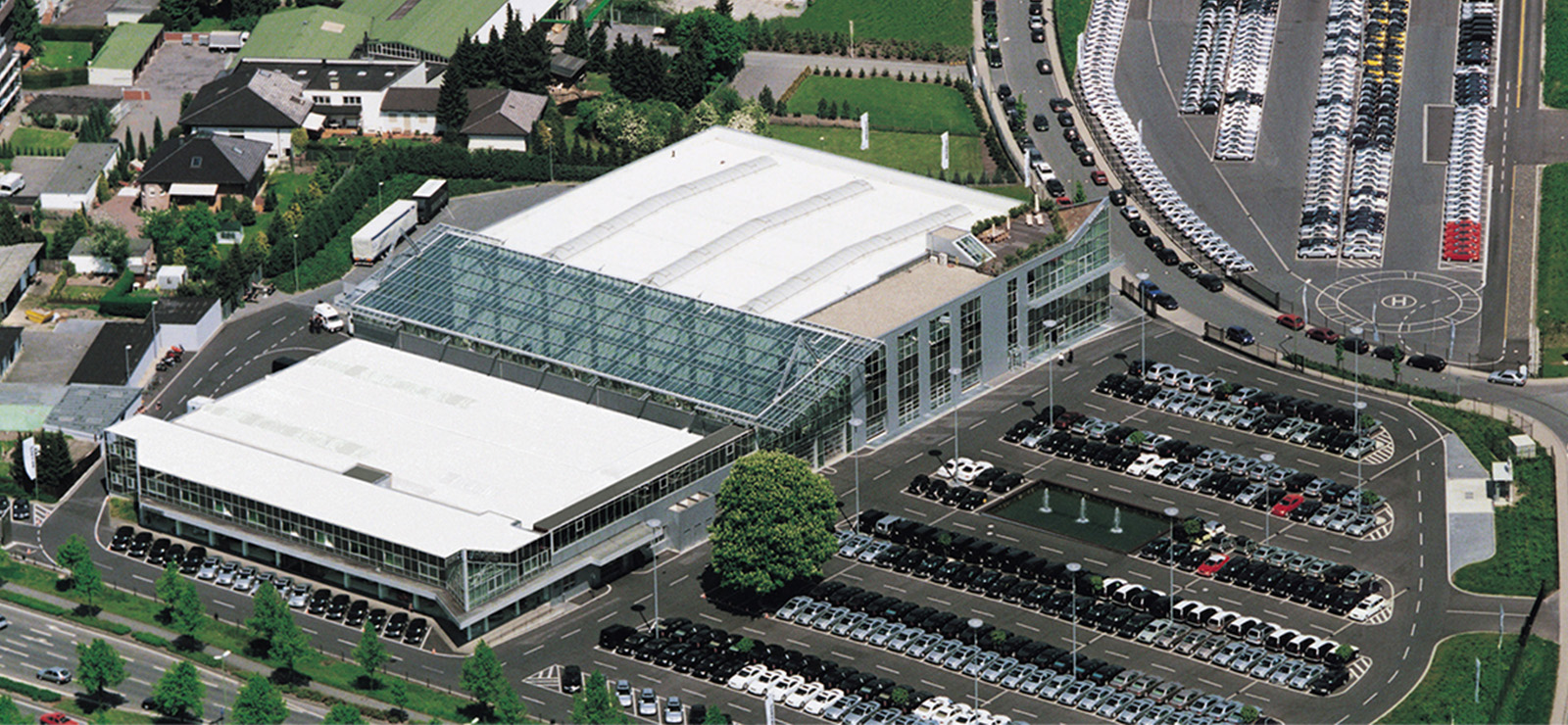1990s
Throughout the transformative 1990s, BRABUS expanded far beyond the reaches of Bodo Buschmann’s humble hometown, and with his sights set higher than ever, some of our history’s most iconic supercars were beginning to make headlines around the world. The first-generation BRABUS E V12, boasting a 6.9-liter V12 engine, explored new heights of precision-engineered high performance with 509 hp. The BRABUS C V8 and the 7.3S Roadster continued this legacy with their unmistakably sleek designs and the best in BRABUS engine technology available at the time. Our first official flagship store opened in California in 1998, making an entirely new concept of individuality, confident performance and handcrafted exclusivity available to an entirely new market, while the introduction of the BRABUS SB 1 for the smart fortwo 450 laid the groundwork for one of our most successful partnerships to date. Amidst a decade of innovation and achievement, Bodo Buschmann solidified his company’s reputation as a leader in luxury and performance.
1992
BRABUS 6.9 V12
For Bodo Buschmann, the beginning of a new decade means new horizons, new possibilities and new ways to challenge the standards of the industry. His primary focus is simple yet characteristically ambitious: to get as much power out of every individual BRABUS project as physically possible. Enter the BRABUS 6.9.
Based on the R 129 series Mercedes-Benz 600 SL, this pioneer among extensively modified sports cars boasts a massive 6.9-liter BRABUS V12 engine producing 509 hp and 705 Nm of torque. The two-seater accelerates from 0 to 100 km/h in just 5.6 seconds, able to reach top speeds of over 304 km/h. An impressive achievement at the time and a benchmark for a wide range of BRABUS products to follow in the years to come.

1993
BRABUS E V12 - The world's fastest saloon
In the spring of 1993, production is completed on what would become one of the most iconic projects in our history: the first-generation BRABUS E V12, based on the W 124 series Mercedes-Benz E 500. At our workshop in Bottrop, BRABUS engineers fit a 6.9-liter BRABUS V12 into the engine bay, raising the vehicle’s power output to 509 hp with a peak torque of 710 Nm at 3,700 rpm.
On its first official road test, the BRABUS E V12 sprints from 0 to 100 km/h in just 4.6 seconds, able to reach a top speed of 286 km/h, and thus marks the beginning of a new trend in our development and design language. A trend defined by unassuming cars hiding unbelievable power. Which is why we like to call it the wolf in sheep’s clothing.

1995
BRABUS C V8
The next project to follow our newly found trend of understated high-performance is the 1995 BRABUS C V8, based on the W 202 series Mercedes-Benz C-Class. Powered by a 6.0-liter BRABUS V8 engine producing 408 hp and 604 Nm of torque, the C V8 accelerates from 0 to 100 km/h in 5.7 seconds, all the way to a top speed of 270 km/h.
Externally, the only hints at its power are a custom front spoiler, larger Monoblock wheels, a sports exhaust with twin tailpipes as well as a lower ride height courtesy of the BRABUS suspension system, designed to offer an entirely unique driving experience underscored by a BRABUS typical feel-good factor.
1996
BRABUS E V12 - Record Breaker
In early 1996, the successor model of the first-generation BRABUS E V12 is gearing up to hit the road, with the focus set on raising the bar to new heights. Based on the W 210 series Mercedes-Benz 500 E, the car features a massive BRABUS 7.3S V12 engine producing 582 hp and 772 Nm of torque. From rest, the E V12 accelerates to 100 km/h in 4.9 seconds.
The top speed is electronically limited to 330 km/h, solely due to the fact that no tires available at the time can support such a heavy car at such speeds. But for those willing to explore the farthest reaches of the speedometer, flying past the 200 km/h mark is a matter of just 16 seconds. Later that same year, the E V12 breaks the Guinness World Record for fastest street legal saloon, forever cementing its place in the BRABUS history books.
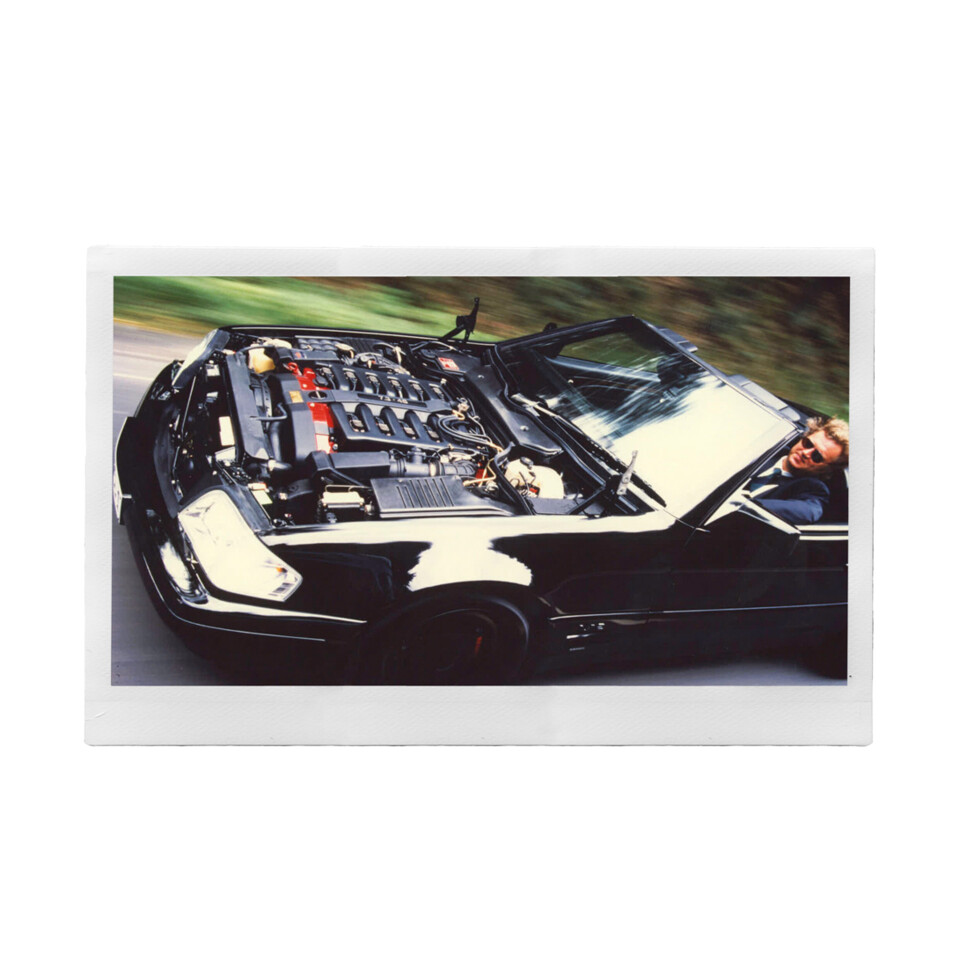
BRABUS 7.3S ROADSTER
In the mid-1990s, the Mercedes-Benz SL 600 is widely regarded as one of the most sought-after sports cars money can buy, and so to us, a glaring invitation to push its limits even further. The goal: a 7.3-liter BRABUS V12 engine conversion producing 582 hp and 772 Nm of torque. The result? The BRABUS 7.3S. In just 4.9 seconds, the roadster sprints from 0 to 100 km/h and reaches a blistering top speed of 315 km/h without breaking a sweat. Most consider a 250 km/h Autobahn run with the top down to be a challenge, but in the eyes of Bodo Buschmann, it is the most unadulterated way to truly experience the power of this next-level two-seater.
In the summer of 1996, the BRABUS 7.3S rolls onto the Autobahn for its first official road test for German motoring magazine Auto, Motor und Sport. With a very confident Bodo Buschmann behind the wheel and the hood of the car left safely back at BRABUS HQ, the crew snaps one of the most iconic shots of our history, encapsulating everything we stand for in a single picture.

1997
BRABUS T V12 - Record Breaker
In 1997, a heavily modified black S 210 series Mercedes-Benz E-Class station wagon is spotted on the Autobahn A31 near Bottrop for the first time. Its designation: BRABUS T V12. Equipped with the BRABUS 7.3S V12 engine producing 582 hp and 772 Nm of torque, it is every bit as powerful as its E V12 counterpart. And even with its long axle ratio, the estate car bolts from 0 to 100 km/h in just 4.9 seconds. As the needle jumps off the speedometer, the BRABUS engineer on the back seat announces that his digital test instruments confirm a top speed of 320 km/h, making the BRABUS T V12 the fastest street legal station wagon in the world at the time.
BRABUS SLK V8
Following the original R 170 series Mercedes-Benz SLK’s debut in 1996, the most powerful model available on the market is the SLK 230 Kompressor, powered by a supercharged four-cylinder engine. Its base output of 193 hp and 280 Nm of torque is certainly more than adequate for relaxing drives along curved country roads, but as usual, Bodo Buschmann has greater plans for this agile little roadster.
After several months of development, an extensively modified BRABUS V8 takes center stage in the engine bay. Boasting an increased displacement of 6.5 liters and producing 450 hp and 662 Nm of torque, the BRABUS SLK V8 sprints from 0 to 100 km/h in just 4.7 seconds. The top speed is electronically limited to 285 km/h. A testament to the undeniable engineering expertise and the dedication to bespoke high-performance that has since become synonymous with our name.
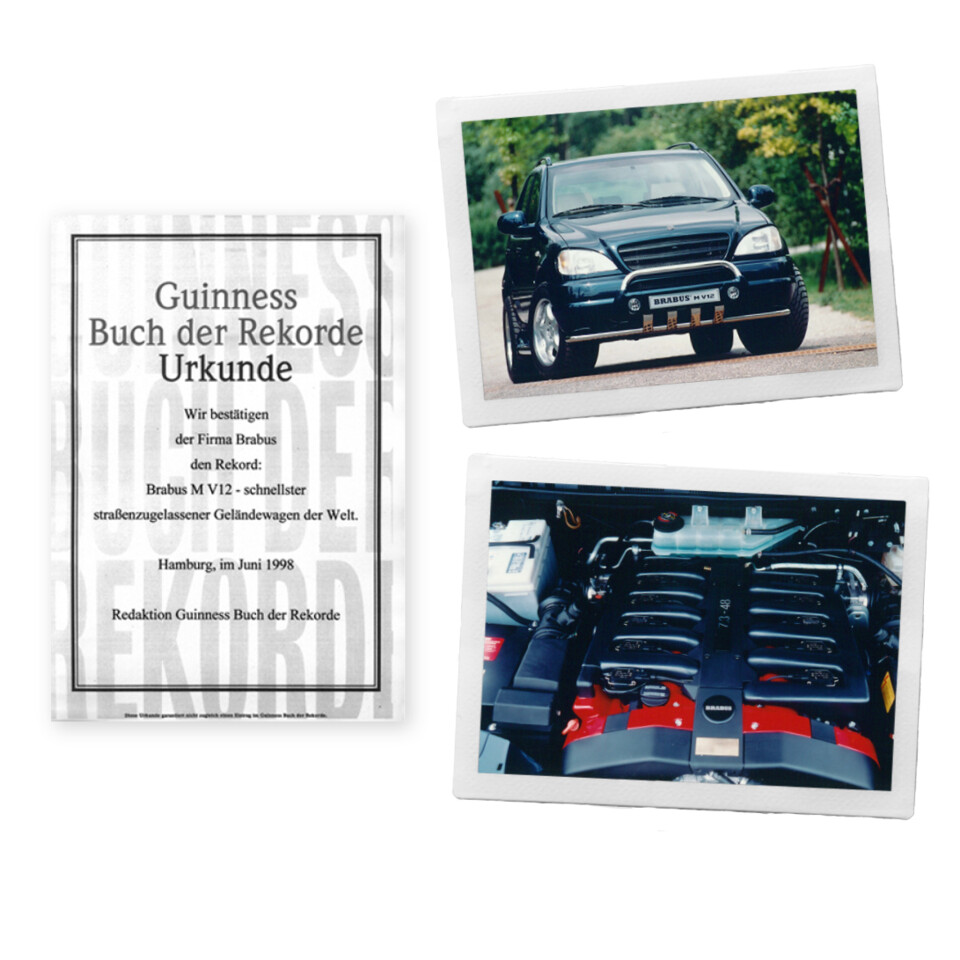
1998
BRABUS M V12 - Record Breaker
The W 163 series Mercedes-Benz M-Class is officially released to the European market in 1998 after a more than successful release in North America one year prior. However, instead of the V8 engine configuration fitted specifically to enter the booming market for SUVs and pickups in the States, the most powerful European version is equipped with a 3.2-liter six-cylinder engine producing 218 hp.
Chief BRABUS engineer Ulrich Gauffrés and his team are tasked with installing a 7.3-liter V12 generating 582 hp as well as 772 Nm of fully brabusized torque. Later that year, the Guinness Book of Records names the 2.1-ton powerhouse designated BRABUS M V12 the “Fastest Street Legal SUV in the World”. From rest, it sprints all the way to 100 km/h in just 5.4 seconds. The supercar’s top speed is electronically limited to 260 km/h.

The first BRABUS Flagship store opens in California
To meet the growing demand for BRABUS individualization across the North American market, our first official flagship store opens its doors stateside in 1998 in Newport Beach, California. Complete with a dedicated sales team, a state-of-the-art workshop, parts warehouse, training center and its very own showroom offering a wide range of BRABUS products.
1999
BRABUS SB 1
As smart reveals their new two-seater city-coupe to the world, Bodo Buschmann once again trusts his sense of potential and sets his sights immediately. Not long thereafter, the very first BRABUS individualization program for the smart fortwo 450 is made available to owners, featuring a range of visual enhancements as well as a BRABUS typical performance upgrade that raises the power output of the turbocharged three-cylinder engine to 70 hp and 100 Nm of torque. The unique and vibrant flair of the BRABUS SB 1 does not go unnoticed around the industry, eventually catching the attention of Daimler and establishing the foundation of one of our most longstanding and successful partnerships to date.
NEw BRABUS HEADQUARTERs
With the beginning of the 21st century right around the corner, the first official expansion of the BRABUS headquarters is commissioned in 1999, which would increase Bodo Buschmann’s rapidly growing company's floor space to an impressive 112,000 square meters. Today known as Plant 1 on Brabus-Allee, the two-part complex becomes home to the management, reception and showroom as well as the development, sales, PR and marketing departments. Beyond a sophisticated roller test bench installation, it also initially houses the in-house BRABUS saddlery and a large parts warehouse, which have since moved to their own independent plants on campus. Most importantly, this expansion includes the primary vehicle workshop in Plant 1, where thousands of BRABUS supercars continue to be built each year.

next decade
The beginning of the new millennium marked the beginning of a new era of BRABUS high-performance, with the early 2000s seeing the realization of some the most ambitious, most powerful and most significant BRABUS projects to date.


